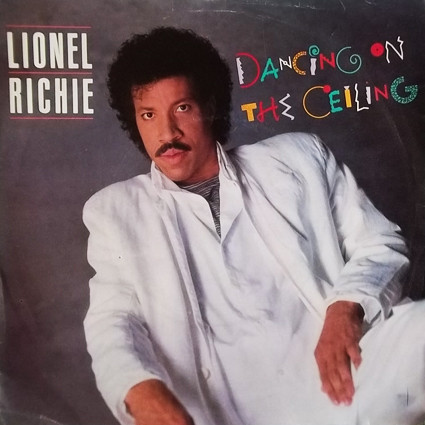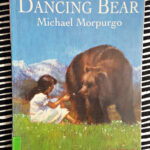Let’s be upfront about this: Lionel Richie isn’t exactly my cup of tea. His penchant for white suits, his smooth demeanor, and the fact he sometimes resembles a more soulful John Oates – none of it particularly resonates. Many of his songs, frankly, lean towards saccharine and overly sentimental. I once had a rather disturbing dream involving Lionel Richie’s head on someone else’s body; it was so unsettling I considered therapy. Apparently, I wasn’t alone in such nightmarish encounters.
However, and this is a significant however, there is one Lionel Richie song that I genuinely enjoy. Just one. Not two, not three, but precisely one: “Dancing on the Ceiling.” When it plays on the radio, I don’t immediately switch stations. Instead, I find myself singing along, much to my own surprise and likely to the dismay of any hypothetical Lionel Richie aversion support group. Released by Motown in 1986, this track is undeniably catchy.
 Lionel Richie Dancing on the Ceiling Era Performance
Lionel Richie Dancing on the Ceiling Era Performance
There’s also an undeniable strangeness to “Dancing on the Ceiling.” The very concept is bizarre – dancing on the ceiling? It sounds like something from a psychedelic experience. It’s surprising that Richie, known for more melancholic ballads, penned these lyrics. Musically, it’s upbeat and energetic, a stark contrast to the slow jams like “Hello,” “Three Times a Lady,” or “Easy.” While it doesn’t erase the memory of those ballads, it does offer a momentary reprieve from that particular brand of schmaltz. If I were in charge of musical justice, I might consider putting Richie on trial for sonic crimes, but thankfully, democracy prevails, even if, as H.L. Mencken quipped, it means “the common people know what they want, and deserve to get it good and hard.”
The 1980s were indeed a peculiar era, and Richie, a master of commercially successful sentimentality, thrived. He was as inescapable as Phil Collins, and it’s difficult to differentiate their levels of ubiquity. Both delivered their predictable styles, and the public consumed it, perhaps like the metaphor of a dog returning to its own… well, you get the idea. It was during this time that one might have started questioning popular taste. But ultimately, it’s not about blaming the artists; they simply provided what the masses desired, and perhaps deserved, “good and hard.”
Returning to “Dancing on the Ceiling,” the album of the same name signaled a decline in Richie’s chart dominance, which was arguably a positive development. It marked a turning point, a culmination of his reign as the king of pop kitsch. While I appreciate “Dancing on the Ceiling,” it has faced criticism. Blender magazine, for instance, ranked it at No. 20 on their list of the 50 worst songs ever. Conversely, the often critical Robert Christgau gave the album a surprisingly decent B+. Perhaps some mind-altering substances were involved in that review. As for Blender‘s assessment, I disagree. To me, it’s an energetic ode to nightlife, with Richie singing about “climbing the walls” and “going round and round until we’re upside down.” And there’s a genuine feeling of exhilaration in it! The infectious melody is undeniable, the call-and-response of “Everybody clap your hands” actually works, and even the guitar solo is surprisingly enjoyable. The music video amplifies the song’s quirky charm, featuring a keytar, questionable 80s hairstyles, and a cameo by Rodney Dangerfield, who, upon looking up at the dancing, quips, “I shouldn’t have eaten that upside down cake!”
The B-side, “Love Will Find a Way,” with its programmed drums and heavy synths, is utterly forgettable. It’s so bland that repeated listens leave no lasting impression. In the context of a Lionel Richie song, this amnesia might be a blessing. You don’t necessarily want to remember every Lionel Richie song, much like you’d prefer to erase the memory of a disastrous cocktail of bad decisions. It’s R&B-lite, vaguely reminiscent of later Steely Dan without any of the redeeming lyrical wit. It’s a blank slate, a pop tabula rasa, and in that nothingness, perhaps one of Richie’s better efforts by default.
In conclusion, “Dancing on the Ceiling,” good. Pretty much every other Lionel Richie song, not so much. It’s a simple dichotomy, unlike actually dancing on the ceiling, which seems incredibly difficult. Despite various attempts at altering my perception, I’ve never managed to achieve ceiling-based dancing, and I’ve given up trying. However, the song’s tune remains a guilty pleasure, a testament perhaps to the idea that love, or at least catchiness, will find a way, even through the vast landscape of Lionel Richie’s pop output. So, fiesta forever, and maybe forget the rest. My advice? Metaphorically speaking, sometimes staying on the ceiling, where it’s unexpectedly fun, is the safest bet.
GRADED ON A CURVE: A


